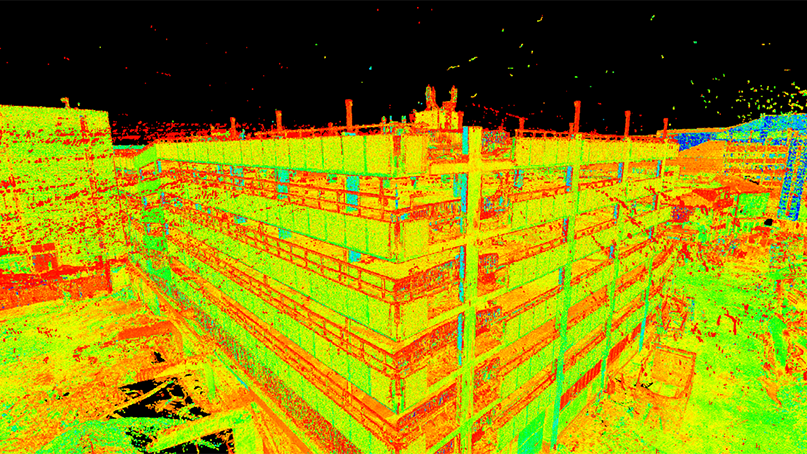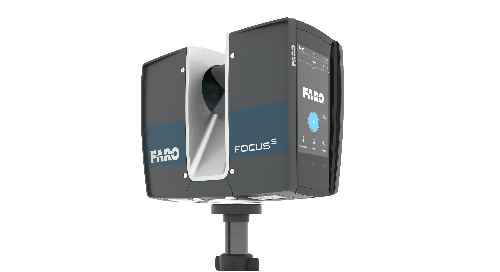Enhancing Production Processes: The Impact of 3D Laser Scanning on Quality Control
3D laser scanning modern technology is transforming high quality control in manufacturing. By supplying high-resolution information and specific measurements, it enables suppliers to determine deviations from requirements with convenience. This development not just improves evaluation procedures yet also boosts functional effectiveness. 3D Scanning. Nevertheless, the execution of this innovation comes with its own set of obstacles. Checking out these facets exposes the wider implications for markets and the future landscape of production

Comprehending 3D Laser Scanning Innovation
3D laser scanning modern technology has developed substantially in recent years, its fundamental concept stays straightforward: capturing the precise geometry of things using laser beam of lights. This technology utilizes laser light to measure distances in between the scanner and numerous factors on an object's surface area. The data collected is then processed to create an in-depth 3D design, accurately reflecting the dimensions and contours of the scanned item.
Generally, 3D laser scanners can be classified right into 2 primary kinds: call and non-contact scanners. Get in touch with scanners literally touch the challenge collect dimensions, whereas non-contact scanners use laser light beams to record data from a range. The versatility of this technology enables its application across numerous markets, including design, production, and construction. Its capacity to generate high-resolution models helps with top quality control, reverse engineering, and quick prototyping, eventually improving design precision and effectiveness in manufacturing processes.
Advantages of 3D Laser Scanning in Manufacturing
As manufacturers seek to boost efficiency and precision in their procedures, the benefits of 3D laser scanning have actually ended up being progressively obvious. This cutting-edge technology enables extremely accurate and quick dimensions of complicated geometries, significantly minimizing the moment required for high quality checks. By recording in-depth data, makers can determine disparities early in the production process, consequently minimizing waste and remodel costs.
3D laser scanning assists in far better style validation, enabling designers to compare as-built conditions with original specifications. This ability guarantees that any type of variances are promptly addressed, boosting total item high quality. Furthermore, the innovation supports the creation of electronic twins, which can be used for simulations and procedure optimizations. Because of this, suppliers not just boost their operational effectiveness however additionally enhance their competitive advantage in the market. Overall, the assimilation of 3D laser scanning stands for a transformative step toward achieving higher requirements in making quality assurance.
Combination of 3D Laser Scanning Into Quality Control
Integrating 3D laser scanning right into quality control processes improves the precision and efficiency of inspections throughout manufacturing. This innovation allows producers to capture comprehensive, high-resolution information of elements and assemblies, permitting precise measurements and comparisons against layout specifications. By using 3D laser scanning, organizations can recognize inconsistencies from tolerances extra effectively, which is vital for preserving product integrity.

Real-World Applications and Study
Real-world applications of 3D laser scanning in producing demonstrate its transformative effect across numerous sectors. For example, aerospace companies utilize this modern technology to perform exact evaluations of components, ensuring they fulfill rigorous security requirements. A notable situation included a leading airplane supplier that utilized 3D laser scanning to improve its top quality control processes, significantly reducing examination times and errors.
In the auto sector, makers have actually executed laser scanning to produce electronic doubles of their vehicles, enabling real-time adjustments during manufacturing. One automotive company reported a 30% decrease in rework costs after incorporating this technology right into their production line.
Additionally, in the customer items sector, companies are making use of 3D laser scanning for quick prototyping, enabling quicker models and improved item styles. These applications show just how 3D laser scanning not only enhances accuracy yet likewise boosts performance and advancement across numerous production domains.
Overcoming Challenges in Execution
Implementing 3D laser scanning in producing presents numerous obstacles that organizations need to browse to totally realize its benefits. One considerable difficulty is the first cost of equipment and software application, which can hinder firms from adopting this innovation. In addition, integrating 3D laser scanning into existing process needs getting over resistance to transform amongst employees, necessitating detailed training programs to assure effectiveness. Information monitoring likewise postures an obstacle, as the high quantity of details created by 3D scanning need to be effectively processed and analyzed to derive workable understandings. Compatibility concerns with heritage systems might impede seamless integration, demanding possible upgrades or alterations. Attending to these difficulties is crucial for suppliers intending to improve quality assurance and maximize manufacturing processes. By developing clear strategies for training, investment, and information administration, business can minimize these barriers and release the transformative possibility of 3D laser scanning in their operations.
Future Fads in 3D Laser Scanning for Manufacturing
As manufacturing proceeds to progress, the integration of 3D laser scanning with increased automation is expected to change production procedures. Improved information analytics will certainly play a crucial role in optimizing operations and improving quality assurance. These trends highlight the possibility for higher efficiency and precision in making atmospheres.

Boosted Automation Assimilation
The assimilation of automation in manufacturing has been progressive, the future of 3D laser scanning is positioned to increase this fad considerably. As manufacturing processes become progressively complicated, the need for exact, real-time dimensions expands. 3D laser scanning innovation uses automated information capture, lowering labor prices and lessening human error. This integration permits makers to improve high quality control procedures, enabling quick detection of discrepancies in production. Additionally, the placement of 3D laser scanning with robotics and automated systems helps with smooth operations, boosting general Read Full Report effectiveness. As makers take on these advanced modern technologies, they can anticipate enhanced accuracy and productivity, positioning themselves competitively reference in a rapidly developing market. The synergy in between automation and 3D laser scanning marks a significant leap onward in making development.
Improved Information Analytics
The assimilation of automation has led the way for advancements in information analytics within the domain name of 3D laser scanning. Producers are significantly leveraging sophisticated formulas and machine learning techniques to examine substantial datasets generated by laser scans. This enhanced information analytics capability permits real-time surveillance of manufacturing processes, enabling the identification of discrepancies and problems much more properly than traditional approaches. Predictive analytics can foresee potential problems, significantly minimizing downtime and enhancing general effectiveness. Moreover, the capacity to imagine information in 3 measurements supplies deeper understandings right into manufacturing workflows, promoting much better decision-making. As 3D laser scanning technology proceeds to progress, the duty of information analytics will come to be increasingly essential in driving innovation and keeping competitive advantage in manufacturing.
Frequently Asked Concerns
What Industries Advantage the Most From 3D Laser Scanning?
The sectors that profit most from 3D laser scanning consist of manufacturing, building and construction, aerospace, automotive, and healthcare. These industries utilize the innovation for precision measurements, quality assurance, and efficient design procedures, considerably boosting total operational efficiency.
How Does 3D Laser Scanning Contrast to Standard Dimension Approaches?
3D laser scanning provides higher precision and speed compared to traditional measurement techniques. It captures comprehensive geometries swiftly, decreasing human mistake and helping with much better analysis, which inevitably enhances general quality assurance in numerous industries.
What Is the Cost of Applying 3D Laser Scanning Innovation?
The expense of executing 3D laser scanning innovation differs significantly, commonly ranging from $10,000 to $100,000, depending on equipment, software application, and training. Organizations needs to consider these expenditures versus possible performance and high quality enhancements.
Are There Details Software Program Needs for 3D Laser Scanning?
Yes, 3D laser scanning requires specific software program, consisting of information processing Recommended Reading and modeling applications. Usual selections incorporate CAD software application, point cloud processing tools, and specialized applications that promote the integration and evaluation of scanned data for ideal outcomes.
Exactly how Lengthy Does a Regular 3D Laser Scanning Refine Take?
A regular 3D laser scanning process can take anywhere from a couple of minutes to several hours, depending upon factors like the size of the object, intricacy of the environment, and needed degree of information for accuracy.
3D laser scanning technology is changing quality control in manufacturing. 3D laser scanning innovation has developed significantly in current years, its basic principle remains simple: capturing the exact geometry of things using laser beam of lights. Integrating 3D laser scanning right into top quality control procedures boosts the accuracy and effectiveness of inspections throughout manufacturing (3D Scanning). 3D laser scanning innovation uses automated information capture, reducing labor prices and minimizing human error. The cost of carrying out 3D laser scanning technology varies considerably, typically ranging from $10,000 to $100,000, depending on training, software, and devices